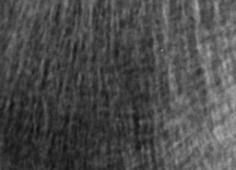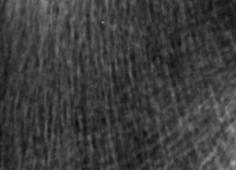Challenge Content
Texture Characterization of Bone radiograph images (TCB) is a challenge in the osteoporosis diagnosis which was held in conjunction and with the support of the International Society for Biomedical Imaging (ISBI) in 2014. The TCB Challenge is still a topical challenge open to competitors for publication, training and collaboration purposes. Some of the publications produced since the TCB challenge was launched are listed below [10-14].
Osteoporosis is defined as a skeletal disorder characterized by compromised bone strength predisposing to an increased risk of fracture [1]. The most common method for osteoporosis diagnosis is to estimate Bone Mineral Density (BMD) by dual-energy X-ray absorptiometry [2]. However, BMD alone represents only 60% of fracture prediction. The characterization of trabecular bone microarchitecture has been recognized as an important factor and completes the osteoporosis diagnosis using BMD [3], but it cannot be routinely obtained by noninvasive methods and requires a bone biopsy with histomorphometric analysis.
2D texture analysis offers a simple way to evaluate bone structure on conventional radiographs [2, 3]. Moreover, many studies have shown that 2D texture analysis can be considered as an indirect evaluation of 3D microarchitecture [4, 5, 6, 7, 8].
The evaluation of osteoporotic disease from bone radiograph images presents a major challenge for pattern recognition and medical applications. Textured images from the bone microarchitecture of osteoporotic and healthy subjects show a high degree of similarity, thus drastically increasing the difficulty of classifying such textures.
The goal of this Challenge is to identify osteoporotic cases from healthy controls on 2D bone radiograph images, using texture analysis. It consists of two populations composed of 87 control subjects (CT, Figure 1) and 87 patients with osteoporotic fractures (OP, Figure 2).
The Challenge is opened to academia and industry. Already published methods can also be submitted.
Some of the participants will be invited to present their work at the workshop during a half day session (28 April – 2 May, 2014) in the form of an oral or poster presentation.
The final results from this challenge are summarized and submitted to journal papers, presenting and comparing all used texture analysis methods used to achieve osteoporosis diagnosis on bone radiograph images. Journal papers are written and co-authored by the organizers and the selected participants. Selected papers publishing. Below some papers published since the launch of this challenge [10-14].
| Figure 1: Control (CT) image | Figure 2: Osteoporotic (OP) image |
References
[1] R. Bartl, B. Frisch, Osteoporosis: Diagnosis, Prevention, Therapy, Second ed., Springer, 2009.
[2] S. Hough, Fast and slow bone losers: Relevance to the management of osteoporosis, Drug Aging. 12, 1-7, 1998.
[3] E. Martín-Badosa, A. Elmoutaouakkil, S. Nuzzo, D. Amblard, L. Vico, F. Peyrin, A method for the automatic characterization of bone architecture in 3D mice microtomographic images, Comput Med Imaging Graph. 27, 447-458, 2003.
[4] R. Jennane, R. Harba, G. Lemineur, S. Bretteil, A. Estrade, C. L. Benhamou, Estimation of the 3d self-similarity parameter of trabecular bone from its 2D projection. Med Image Analy., 11(1):91-98, 2007.
[5] R. Jennane, W. J. Ohley, S. Majumdar, G. Lemineur, Fractal Analysis of Bone X-ray Tomographic Microscopy Projections. IEEE Trans Medical Imaging 20(5):443–449, 2001.
[6] G. Luo, J. H. Kinney, J. J. Kaufman, D. Haupt, A. Chiabrera, R. S. Siffert, Relationship between plain radiographic patterns and three- dimensional trabecular architecture in the human calcaneus. Osteoporos Internat., 9(4):339-345, 1999.
[7] L. Pothuaud, C. L. Benhamou, P. Porion, E. Lespessailles, R. Harba, P. Levitz (2000) Fractal dimension of trabecular bone projection texture is related to three-dimensional microarchitecture. Journal Bone Miner. Res. 15(4):691–699, 2000.
[8] L. Pothuaud, P. Carceller, D. Hans, Correlations between grey-level variations in 2D projection images (TBS) and 3D microarchitecture: applications in the study of human trabecular bone microarchitecture. Bone 42(4):775–787, 2008.
[9] E. Lespessailles, C. Gadois, I. Kousignian, J. P. Neveu, P. Fardellone, S. Kolta, C. Roux, J. P. Do-Huu, C. L. Benhamou, Clinical interest of bone texture analysis in osteoporosis: a case control multicenter study. Osteoporos Internat., 19:1019-1028, 2008.
[10] K. Zheng, C. Harris, R. Jennane, S. Makrogiannis, Integrative Blockwise Sparse Analysis for Tissue Characterization and Classification. Artificial Intelligence in Medicine, https://doi.org/10.1016/j.artmed.2020.101885.
[11] R. Su, T. Liu, C. Sun, Q. Jin, R. Jennane, L. Weid. Fusing convolutional neural network features with hand-crafted features for osteoporosis diagnoses. Neurocompting, Elsevier, https://doi.org/10.1016/j.neucom.2019.12.083.
[12] D. A. Palanivel, S. Natarajan, S. Gopalakrishnan, R. Jennane. Multifractals based Lacunarity Analysis of Trabecular Bone in Radiography. Computers in Biology and Medicine, Elsevier, https://doi.org/10.1016/j.compbiomed.2019.103559.
[13] A. Singh, M. K. Dutta, R. Jennane, E. Lespessailles. Classification of the Trabecular Bone Structure of Osteoporotic Patients using Machine Vision. Computer in Biology and Medicine, Elsevier, doi.org/10.1016/j.compbiomed.2017.10.011.
[14] H. M. Harb, A. S. Desuky, A. Mohammed, R. Jennane. Histogram of Oriented Gradients and Texture Features for Bone Texture Characterization. International Journal of Computer Applications (0975 – 8887), Vol. 165 – No.3, May 2017.


